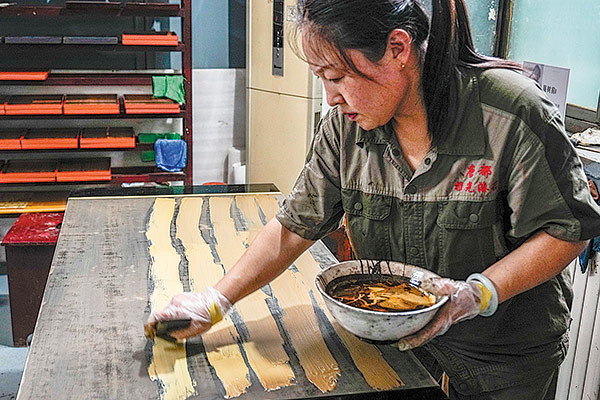

By then, Qiao's health had deteriorated and Xue was at the helm of design and research. He referred to his erstwhile experience in painting and adopted critical innovation ideas to improve lacquerware designs. Not only did Xue restore lost lacquer art techniques, he also came up with a dozen new methods.
With the rise of local merchants under the Ming (1368-1644) and Qing rulers, Pingyao lacquer products were sold in Russia and Southeast Asian countries.
In the 1970s, polished lacquerware from Pingyao became a major contributor to Shanxi's foreign-exchange income and made its way to 20 countries and regions.
"Sales in France were the largest. The French liked distinct Chinese designs, particularly historical figures and rural scenery," Xue says.
An art as delicate as lacquerware-making can be very demanding. Aspiring artists need to train for at least three years to grasp basic polishing and painting techniques. According to Xue, more than eight years of practice is necessary to become proficient in the craft.
The complex process that covers wood selection, lacquer application, painting and polishing usually calls for joint efforts by multiple artists. They need to work in tandem to deliver delicate lacquerware, especially those inlaid with conch shells or gold foil.